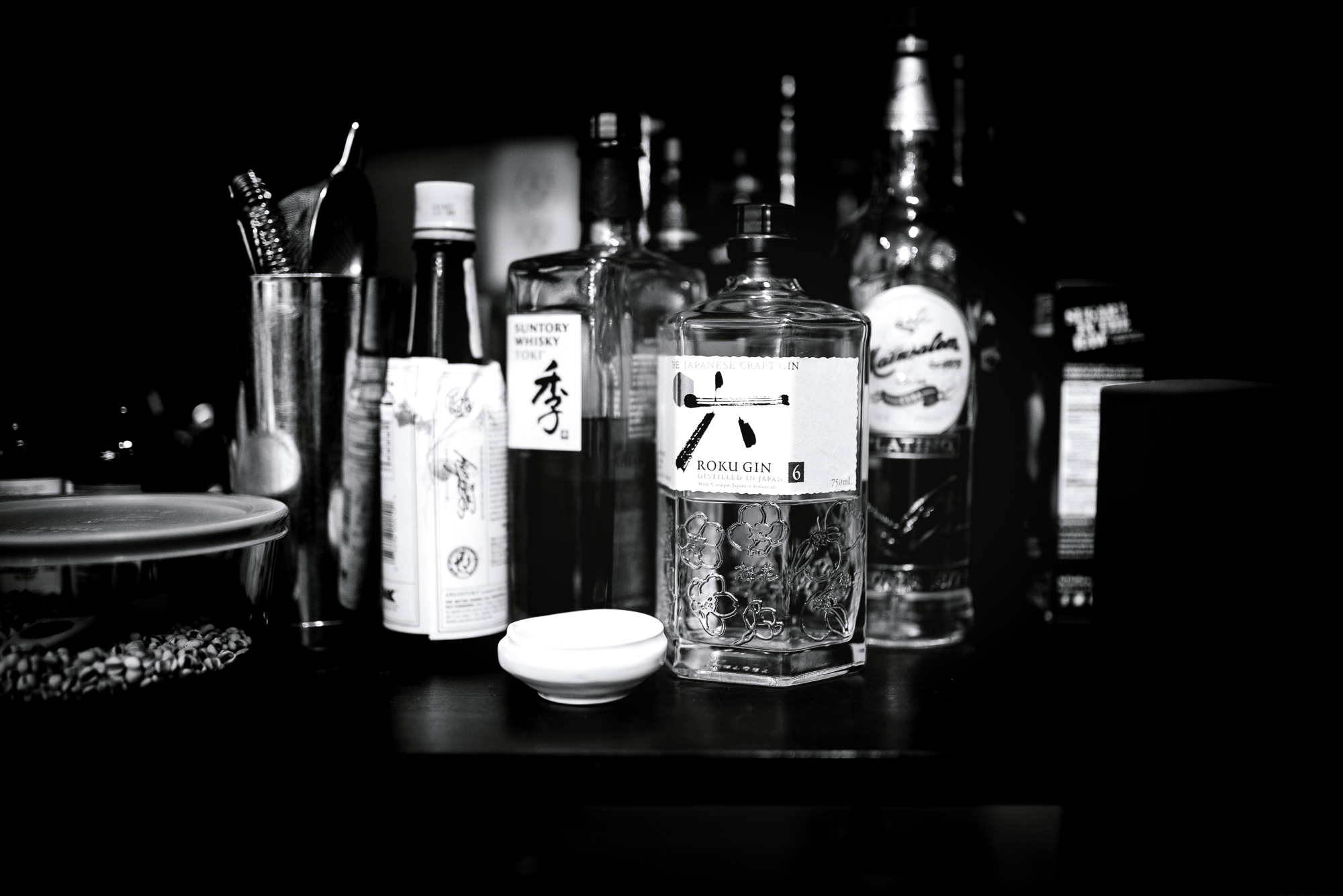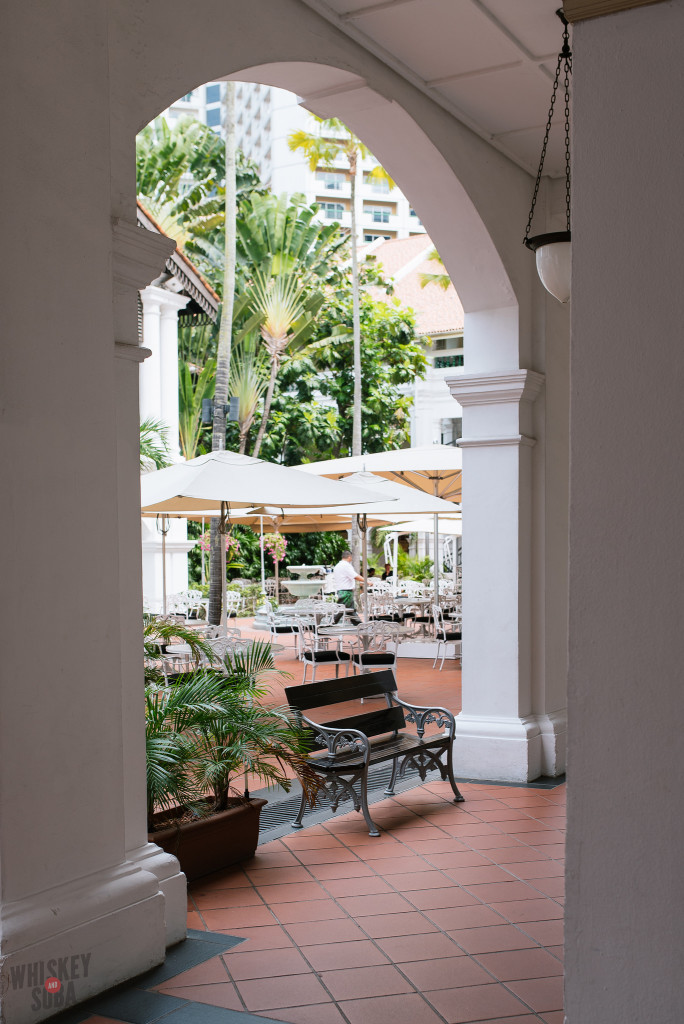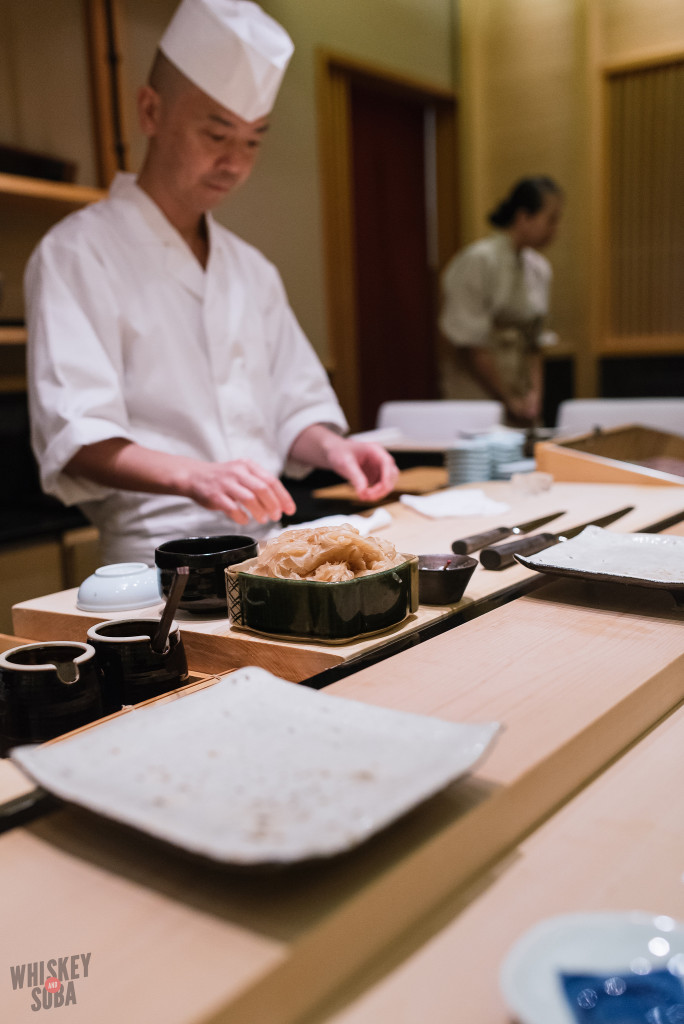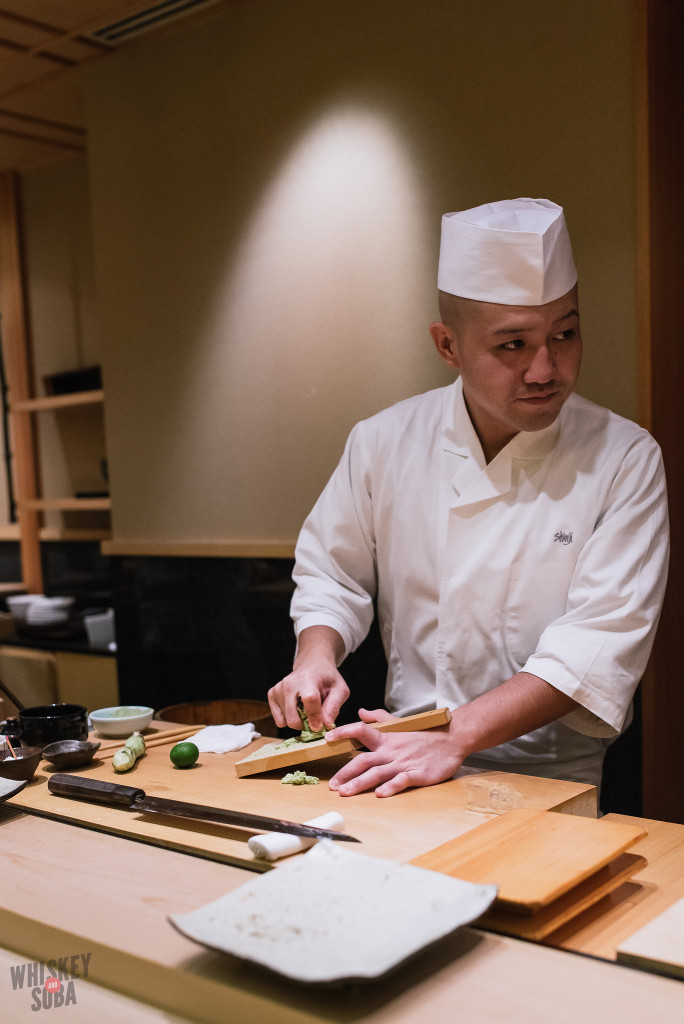Stuff to eat. Mostly around St. Louis.
DavId Utterback: Omakase series
Listen, time is of the essence. We don’t have long.
There’s a man who lives in Omaha (like…Nebraska). His name is David “Yoshitomo” Utterback, and he is the chef/owner of a sushi restaurant called Yoshitomo. It is, by all accounts, fantastic.
Dave and our hometown hero, Nick Bognar (Nippon Tei, iNDO), became BFFs awhile back, as sushi boys do, which lead to a series of dinners here in St. Louis. I posted about them on social, which honestly seemed a little rude—they were done. Completed. Finito. All you could do was double tap and move on with your life.
GOOD NEWS. Chef Utterback is returning to St. Louis to do an omakase takeover at iNDO on July 22nd. There are two seatings—5pm and 8pm. Tickets can be purchased here through Tock. GO NOW. If, somehow, it’s already sold out, I highly recommend commenting below, demanding that Nick kidnap Dave and force him to stay until this city is satisfied.
I was incredibly sick when he was here last, but I am a champ, so I still went, took photos, and ate my food alone in the back of the restaurant before continuing my impersonation of a dying Spencer. That dinner is below and, honestly, it was so good that it’s made me consider going to Omaha just to experience Yoshitomo’s omakase again (especially his super secret foie gras rice—I don’t know what he did, but holy moly). I mean, I haven’t, but I’ve really strongly considered it. I used to go to Omaha for work, and it’s honestly kind of cool. We should all go together sometime.
Crudo
kiwi, leche de tigre
Foie Gras rice
Yoshitomo’s secret recipe
Hirame
shiso, ume, lime, shiro nikiri
Isaki
buri
Akamutsu
Shima Aji
Akami
Chutoro
Otoro
Saba
King Salmon
Iwashi
Yaki Gindara
Hotate
Wagyu
Tamago
Omakase V: Nick Bognar & Chris Bork
This is another one of those posts that really isn’t doing you any good.
I mean, what’s the point in me telling you there was a two night pop up where Nick Bognar of Nippon Tei combined forces with Chris Bork, formerly of VISTA (RIP)? Only 30 or so tickets were sold, so more than likely, you weren’t one of those people. That sucks, man. I think you really would have liked it.
When I posted about it on Instagram and Twitter, a bunch of you messaged me specifically about how you missed Bork, how his food was sooo good, etc. Let me tell you something: no one loves what Bork is doing more than me. He understands, respects, and plays with Asian ingredients and dishes in a way I only dream I could. If I were an obscenely wealthy man, I would quit working and pay him handsomely to teach me everything he knows. And to cook most of my meals. Also, give me hair styling tips. He is my food crush.
That’s not to say Nick Bognar isn’t also one of my favorites, because he is. He’s figuring out how to combine his Thai heritage with his love for Japanese cooking, and when he perfects that, St. Louis won’t know what hit them. The Isaan Hamachi you see below will be his signature dish—as soon as that hits his menu, consider it a must-order. In fact, ask him for the next time you're in. Let’s peer pressure him into feeding us that good stuff.
Anyway, the dinner was the best I’ve had so far in 2019. You should message Bork and Bognar (doesn’t that sound like an Eastern European version of Simon and Garfunkel?) and tell them that you demand more collaboration dinners.
OMakase V
Design work by ForTheWhen
tskune
marinated quail egg, tare, yuzu gel
Kanpachi
Isaan Hamachi
Thai koshi, coconut naam pla, candied garlic, shallots
Foie Gras Torchon
Kumquat, mushroom chip, dashi, pickled shiitake
Shima Aji
Madai Ceviche
Seabream, leche de tigre, lime zest, radish, basil oil
Khao Soi Soup Dumpling
curry leaf nage, cilantro, lime zest
Zuke honmaguro akami nigiri
Laab Tartare
lamb tartare, laab spices, candied pine nuts, rice crackers, thai basil
Fillet of Beef
shrimp head red curry, raw Hokkaido scallop, scallop jerky, black garlic butter
Chutoro
Santa barbara Uni
Coconut & Kaffir Panna Cotta
Kaffir lime, ginger snap soil, basil, coconut vinegar gel, plum
Nick Bognar's Omakase
St. Louis, MO
Finally, quality sushi arrives in St. Louis.
I’ll dedicate a full post to Nippon Tei and Ramen Tei’s revival in the near future, but if you’re somehow unaware: Nick Bognar, the son of Nippon Tei’s owners, returned from some time working outside of St. Louis, namely at the sushi powerhouse Uchiko in Austin, to let everyone know that it is possible to get great sushi in St. Louis.
erRecently, Nick debuted his first omakase dinner—basically ‘chef’s choice’—at Ramen Tei’s 8-person bar. I managed to wrangle a seat at one of the two seatings, mostly thanks to my superior dishwashing abilities. I’ve done a handful of omakases around the world, including one at the way-too-sterile-but-Michelin-starred Shinji by Kanesaka in Singapore. Almost every one I’ve eaten has been almost eerily quiet, almost to the point of it being awkward. I can only stare at a sushi master slicing fish for so long.
Luckily, Nick’s version of the omakase matched his personality: fun, bold, and, most importantly, not strictly Japanese. Bognar’s mom is Thai, and he wove Southeast Asian flavors and techniques throughout. More modern omakases are popping up around the globe, but in a traditional Japanese one like Shinji, you’re just getting the best possible fish with the best sushi rice, and that’s about it. It has its place, but honestly, it can be a boring meal (for a hefty sum) .The hamachi crudo with naam pla, Thai kosho, and candied garlic was the opposite of boring and easily the dish of the night—a night that included A5 Wagyu, two types of uni, and otoro—with a level of complexity that you don’t often see with sashimi. This should become a permanent fixture on the Nippon Tei menu. If it’s not, feel free to harass Nick.
Nick will be hosting guest sushi chef David Yoshitomo of Omaha, Nebraska on October 22nd, and tickets are available for it at https://www.exploretock.com/yoshitomo, then Uchiko’s head sushi chef, Yoni Lang, in November (TBD). You can see the full omakase tasting below.
MADAI
aged 4 days, shiso, lime
Hirame
aged 1 week, Thai kosho
Kinmedai
aged 4 days
Boquerones & avocado nigiri
Hamachi Crudo
Thai kosho, naam pla, candied garlic, peanuts, shallot
stuffed chicken wing
deboned, stuffed with shrimp farce, topped with black truffle
Kanpachi
aged 1.5 weeks, sour cherry ume
Shima aji
aged 1.5 weeks, negidare, ginger aroshigane
Salmon 3 ways
cooked collar, sashimi with gojiberry zu, marinated ikura
bluefin chutoro
candied garlic
72 hour short rib nigiri
King trumpet mushroom nigiri
Peruvian uni
Maitake mushroom tempura
fried, aged parmesan, black truffle
Santa barbara uni
Nodoguro
aged 4 days, candied quinoa
Bluefin otoro nigiri
a5 wagyu beef
uni butter
tamago
Shinji by Kanesaka
A stark white colonial complex stands in the center of Singapore's downtown, surrounded by modern monoliths and heavily trafficked roads. The Raffles Hotel, built in 1887, is one of the world's finest and remains the gold standard for Singapore - if you're visiting and looking to spend $700+ a night, look here, not the Marina Bay Sands. Raffles also seems to be the inspiration for every Singaporean hotel that came after it: construct a beautiful building with fantastically modern accommodations, then fill the empty spaces with high-end stores, fine dining, and lush landscaping. Walking into the lobby is a bit like the first time you see The Grand Budapest Hotel's interior; you get transported to another time and another place. And if you're not a guest, like me, you get transported back outside.
Gold Elevator at The Raffles Hotel Singapore
Courtyard at The Raffles Hotel Singapore
I'm hesitant to recommend this, but if you visit Singapore, go to The Long Bar the hotel. The Long Bar is most definitely a tourist trap - the people you see in there are more than likely the same people who will be dining at the Clarke Quay Hooter's that night - but it has a very cool Malaysian plantation design to it. This is the place where the sickly sweet Singapore Sling was invented, but that doesn't make it any better. I'd rather stop in for a beer or bourbon than get a $30 cocktail that tastes like hummingbird food.
Lights at The Raffles Hotel Singapore
Directory at The Raffles Hotel Singapore
Choosing where to spend my limited meals in Singapore is a challenge; this is a city with 10 fine-dining establishments on the Asia's 50 Best Restaurants list, plus an insurmountable number of wonderful local restaurants and hawker stands. I've agonized over menus, my mind a barrage of haute cuisine and fine ingredients.
Table Settings at Shinji by Kanesaka
The first of my splurge meals was at Shinji by Kanesaka at Raffles. Shinji is the Singapore outpost of Shinji Kanesaka's 2-Michelin starred Tokyo restaurant. Kanesaka's executive chef is Koichiro Oshino; I was lucky enough to have him as my chef during my meal there.
A little too confident in my ability to cope with the Singapore heat, I arrived at Shinji drenched in sweat, dehydrated, and possibly suffering from a little heat stroke. Walking through the lattice door into the restaurant - which is just a small room with a bar wrapping around the 3 sushi chefs - felt like something out of a movie. As the door slid closed behind me, the oppressive heat, the bustle of the city, the stark white walls of the colonial hotel, dissipated. Within 5 minutes I was transferred from 2015 Singapore to early-1900's luxury to a cozy Tokyo restaurant.
I sat between Oshino-san and another sushi chef, watching them prepare for service as I cooled down. I originally intended to get the Tsuki lunch set (12 pieces, $125), but I ended up going with the Hana (9 pieces, $75) due to my internal organs shutting down.
Ginger at Shinji by Kanesaka
Chef at Shinji by Kanesaka
The meal began in near total silence, as other diners had not yet arrived. Oshino-san welcomed me, asked me if there was anything I didn't eat (no), and we began. I was given a bowl of thinly sliced daikon (radish) dressed with a ginger sauce and seaweed in a light sesame sauce. A simple starter and palate cleanser.
My descriptions for the sushi itself will be minimal. Shinji's focus is on balance, harmony, and honoring the ingredients. We didn't speak much during the meal; it was more like watching a movie or play than anything else. For many of the dishes, it's simply a piece of fish dabbed with soy.
Something that sets apart a great sushi place from the average is the rice. This cannot be emphasized enough. The slight vinegar flavor, the perfect temperature and texture; it was the best sushi rice I can remember eating anywhere. The more obvious difference is the quality of fish, all of which is picked by Kanesaka himself at the Tsukiji fish market in Tokyo, then shipped to Singapore.
The first piece of sushi was Suzuki (sea bass), followed by Ika (squid). The squid was cut so thinly you could see the dab of wasabi through it. When editing the photos, I had to lower the white level of the squid - it was so white, it nearly disappeared over the plate and rice.
Sea Bass at Shinji by Kanesaka
Squid at Shinji by Kanesaka
Sushi Making at Shinji by Kanesaka
The most beautiful piece of the meal goes to the Chu-toro (medium fatty tuna), though the otoro (fatty tuna), the most highly-sought after piece of tuna, trumped it in flavor. It melts in your mouth like butter.
Chu toro tuna at Shinji by Kanesaka
Otoro Tuna at Shinji by Kanesaka
Kuruma ebi (Japanese Tiger prawn) made a striking appearance on the plate, but was my least favorite piece. I couldn't discern anything particularly special about it; I would have greatly preferred uni. The negitoro (tuna with spring onion), on the other hand, may have been the bite of the night. The fatty tuna was chopped and tossed with thin slices of onion, creating a balance of soft and crisp, fatty and sharp.
Prawns at Shinji by Kanesaka
Continuing with the tuna theme was marinated maguro (tuna), a ruby cut of fish that had been marinated in soy.
Tuna Slicing at Shinji by Kanesaka
Glazing Tuna at Shinji by Kanesaka
Tuna Sushi at Shinji by Kanesaka
Anago (saltwater eel), compared to unagi, is fishier, the texture more fragile and flakey. I would have preferred uni. I'm really sad I didn't get uni. After the anago came Aji (horse mackerel) and Suimono (clear soup). My body was still cooling down at this point, so I didn't eat much of the hot soup
Anago at Shinji by Kanesaka
Soup at Shinji by Kanesaka
Glazing Sushi at Shinji by Kanesaka
My last piece of sushi was tekka maki, a simple tuna roll. It was served with pickles and, without question, the best tamago (egg) I've ever had. Unlike the more traditional tightly folded tamago, this was an egg custard that had been set. One of the goals I'm setting for myself is figuring out how to recreate it; it had enough sweetness and creaminess that it would be paired with a dessert.
Tekka Maki Prep at Shinji by Kanesaka
Tekka Maki, Egg at Shinji by Kanesaka
The meal closed with a dessert that, like the sushi, appeared simple, but packed a wallop. The pumpkin pudding was incredible. The pudding itself was a mix of vanilla and pumpkin, topped with toasted pumpkin seeds and a sweet pumpkin sauce. At the base was pureed pumpkin.
Pumpkin Pudding at Shinji by Kanesaka
The meal was sushi at its purest, but this was one of those that I'll remember more for the experience than the food. There's no doubt the sushi is world class, it's just that I want more complexity when I eat. That's why I love Niche, Sidney Street Cafe, and Publico back in St. Louis; I like to get a plate that makes me wonder "how did they do that?" or "how did they think of that?" For me to fully enjoy Shinji by Kanesaka and to fantasize about going back would require me to do the $250 omakase, I think. Still, I'm glad I went.
This restaurant has moved.
#02-20 Raffles Hotel
1 Beach Road
Singapore 189673
+65 6338 6131



































































































